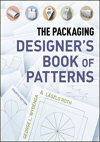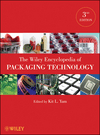Refill, Reuse, Repeat: The Rise of the Refill

Once viewed as an inconvenience, refill products are now considered an essential part of moving toward a circular economy. They help eliminate plastic waste and pollution and can offer significant reductions in greenhouse gas emissions. Pair this with the fact that today’s consumers are more eco-conscious than ever, and you have the rise of the refill. A 2021 GlobalData survey found that two-thirds of global consumers said they find refillable/reusable an important factor in a product (twice as important as luxury packaging), and a recent Nielsen study found reusable packaging to be one of the top sustainability attributes for which consumers are willing to pay more.
For brands that are interested in capitalizing on the estimated $10+ billion opportunity that is reusable packaging (The Ellen Macarthur Foundation), here are four different refill and reuse models, each with unique objectives, benefits and challenges:
- Refill-At-Home: The refill-at-home model allows users to refill the product/package at their home, including products purchased in-store, online, or through D2C subscription services. It is becoming popular in the home care and personal care categories.
- Refill On-the-Go: The refill on-the-go model requires consumers to travel to a store or dispensing station to refill their product. It is better suited to traditional retail channels and urban environments with easier access to refill stations.
- Return-from-Home: With this model, packaging is picked up from home and returned to the brand, which prepares it for reuse. In this case, the brand, not the consumer, owns the packaging and refill process.
- Return On-the-Go: With this model, users return packaging to a store or drop-off point where the brand owner collects it.
Visit BerlinPackaging.com for more information.
Looking for a reprint of this article?
From high-res PDFs to custom plaques, order your copy today!








